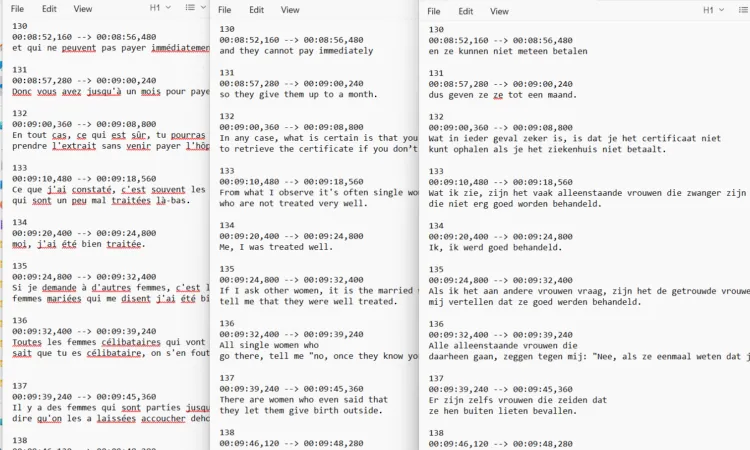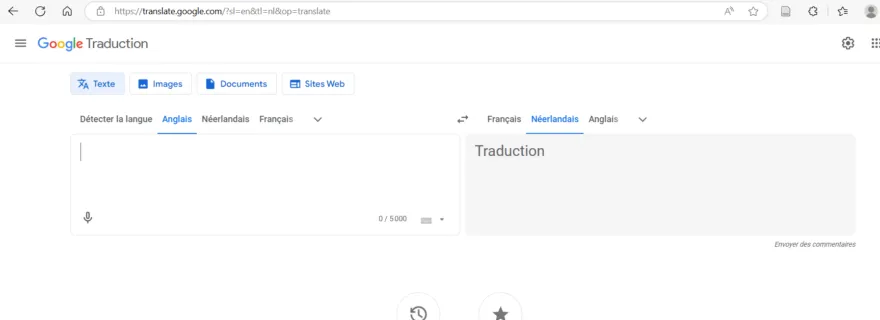Lost in translation?
How do you carry a voice across languages, without losing its rhythm, its pauses, or its contradictions? What happens when you have to do that three times, for three audiences, in three different ways?
More than words
Analysis begins after fieldwork, and translation is often its first act. You have to listen closely, not just to what is said, but how it is said. The sigh before a sentence, the hesitation mid-thought, the repetition that reveals uncertainty or emphasis. These are not side notes. They are data that needs to be analyzed too. The bigger challenge is how to remain true to how something is said and how it will be read.
My respondents spoke in rhythms that carried emotion, pauses, and repetitions. They spoke in sentences that trail off or that are never finished. When translating their words from French to English, or even Dutch, these textures risk being flattened for the sake of clarity and structure.
Subtitling in three languages
We had frequent discussions during the translation of the subtitles of our videos. Translating one sentence is already a negotiation. But subtitling in three languages (Dutch, English and French, sometimes even Arabic) requires continuous shifting. Each language carries its own rhythm, its own shortcuts, and its own limits. A sentence in French might rely on context or gesture. In Dutch, it may become more formal. In English, it risks becoming too neat. And with subtitles, you are not just translating, you are condensing, fitting meaning into two lines, in just a few seconds.

Risk of translation
It is not just about accuracy. It is also about tone, register, intention. We often had to ask ourselves: does this translation protect the meaning or reshape it for the viewer's ease? Sometimes, it can be tempting to simplify a sentence, remove repetitions, make it "flow better," but in doing so we risk smoothing out something that is supposed to stay raw.
So translations became their own form of analysis. Play it again. What do you hear? Rewind. Play. It becomes a new way of staying with the material and remembering that research is making sure the words arrive as true as possible.


